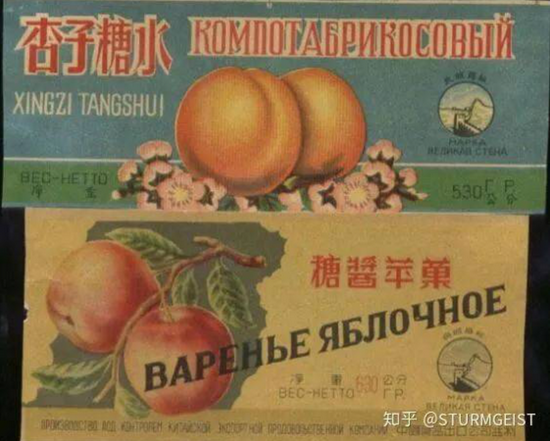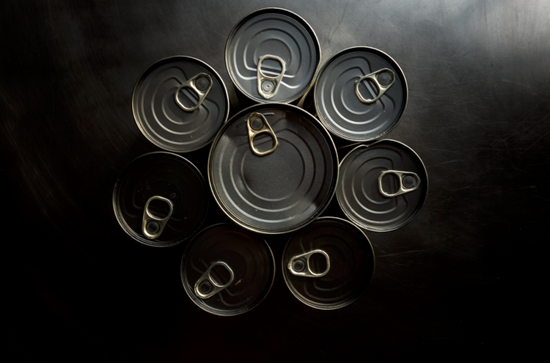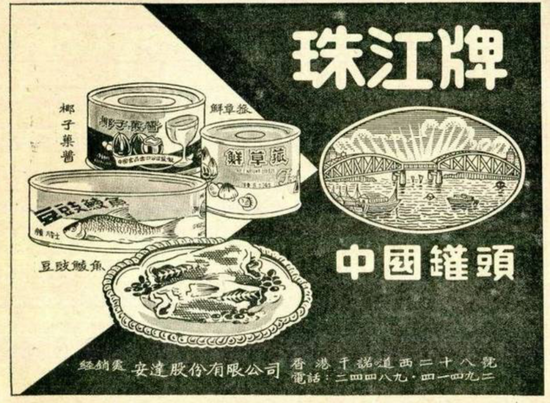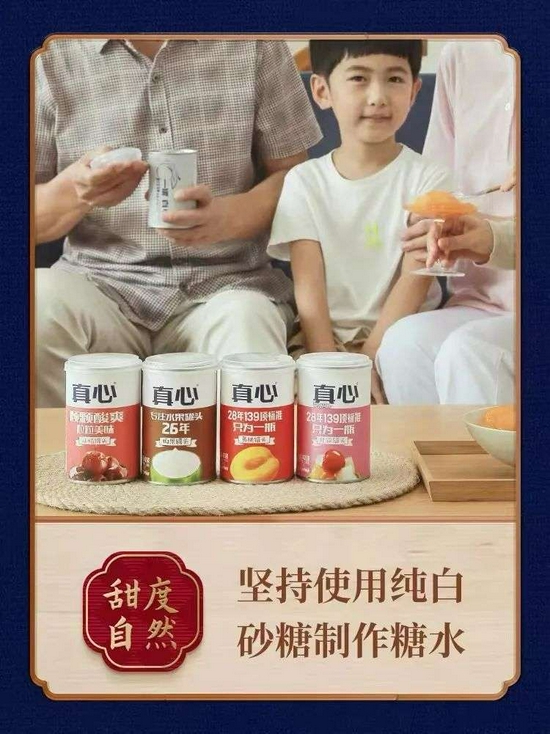Welcome to follow the WeChat subscription account of "Sina Technology": techsina
Writing/Salted Fish
Source: Wu Jiuju "(ID: esnql520)
Brilliance sealed by glass bottles.
In 2014, the new weekly magazine, which was issued to the 400th issue, planned a special issue with the theme of "My hometown in the 1980s". The magazine used 400 pages to record and introduce the scenery and customs of the 1980s.
In the last chapter of the magazine, the subtitle is "Post 80s Dialogue in the 1980s", and 80 memories belonging to the 1980s are listed in the middle. Today, we are going to talk about the 52nd memory: when I was sick, I felt that canned fruit was the best food in the world.
Canned fruit.
It may not only be the post-80s generation, but also the post-95 generation should have some memories of it. On the shelves of Linglang, a series of fat glass bottles with iron caps are arranged in order. In the bottles, various fruit petals are soaked in clear sugar water, sometimes yellow peach, sometimes pineapple, sometimes citrus.
——Fruits are different, but as long as they are put in the context of the 1980s, they are synonymous with good holiday gifts and expensive and luxurious table treasures. At that time, canned fruit was almost the highest courtesy for visiting relatives and friends. If you got several cans in the New Year, you would not dare to pry them open.
However, time changes. The 1980s flashed by, and canned fruit failed to advance rapidly. The glory of the past, accompanied by the rise of the cold chain logistics industry, became a little bleak.
Now, in the eyes of a new generation of diners, it no longer has a different meaning. The other side of the sweet taste is high sugar, and the segmented block may mean inferior or rotten fruit. After entering the new century, what is left for the fruit canning enterprises is the time that will never come back and the falling sales volume again and again.
01
Fruit defeated fruit
Yes, the 1980s, in the memory of the general public, was the most brilliant moment in the life of canned fruits.
Before the consumer culture was so prosperous, canned fruit, orange candy and eight treasure porridge had always been regarded as a three piece set for visiting patients. It was a taste that was so treasured that "I can only eat a mouthful of canned fruit when I am sick" became a collective memory of a generation.
But the bell of the new century is ringing, and cold chain logistics is spreading all the way along the mountains and rivers, which also makes canned fruit farther and farther away from the table of contemporary people. After the millennium, the most prominent label of canned fruit is no longer expensive and delicious, but the movie symbol in the movie Chongqing Forest that will expire on May 1.
No one can say clearly, when did the suspicion begin to emerge? It may be that when more and more fruit stores opened on the streets and supermarkets were more and more full of food, canned fruit lost its right of speech step by step.
Up to now, almost everyone believes that canned fruits are not only non nutritious in front of fresh fruits, but also more likely to bring more fat and heavier psychological burden.
Indeed, compared with fresh fruits, those fruits soaked in sweet syrup, although bright in color and full in taste, are always plagued by high calorie. Moreover, this problem is not groundless. The data shows that the juice of canned fruit is sugar, and its heat is 40%~110% higher than that of fresh fruit pulp (edible part).
To some extent, the major defects in the nutritional structure of canned fruits have become the most prominent sales bottleneck.
If the time scale is extended, we will find that the shortage of canned fruits in the 1980s was also due to nutrition.
This can be traced back to the age when the taste was scarce. It was a time when you could chew a crystal sugar with full fragrance, not to mention the fruits soaked with sugar juice. In the memory of Zhao Hua, a post-70s writer, sugared water was an indispensable existence in that era. Children could only drink white sugar water and brown sugar water when they had a cold and fever. However, in the general environment of sugar shortage, how can cans full of sugared water not attract people's attention.
Today's canned fruit products rarely dare to mark the word "sugar water" on the outer package. The manufacturers are very clear that compared with the last century, consumers in the new century no longer respect "sugar", and even have the tendency to face the enemy. Contemporary young people praise a dessert cake as delicious, and the highest praise is generally "not too sweet".
In this case, the sweet syrup in the canned fruit is not only the biggest stumbling block on the road to health, but also the problem of freshness due to the extremely long shelf life of ten months.
In the end, fruit defeated fruit - in the third decade of the 21st century, canned fruit has encountered a public outcry. It is no longer a best-selling commodity on supermarket shelves, but an ornament among the various choices of supermarkets.
At the same time, the sales territory of canned fruits has also shrunk all the way, and finally, the northeast is the end of the collective memory, which has been quietly frozen.
02
Northeast, the last black land where can culture grows
In recent years, there has been a trend on social platforms, which is summarized as "every winter, the Northeast will be subject to the Renaissance".
Last year's revival was "Wolf disco" and the bath culture in Northeast China, while this year's revival was "Mohe Ballroom" and canned yellow peaches for curing colds.
But in fact, for the canned yellow peach, this revival is not due to the long time period, but precisely because of the short time period.
A report in 2002 by China Sugar Business Information, a sugar and wine industry magazine, verified this:
"With the improvement of living standards, the variety of food is increasingly rich. In supermarkets and supermarkets in many regions, there are many people in front of the snack food stalls, but few people stop in front of the canned food shelves. However, in the northeast of China, canned food is still young. The cold and long winter here, the lack of fresh fruits and vegetables, the need for energy and the influence of the Russian national diet make canned food the favorite of the region. Canning is a tradition here, especially in winter and spring, which makes the canned food market full of vitality. "
The report recorded the Northeast canning market at the beginning of the millennium, and interpreted the enthusiasm of northerners for canned fruits from the perspective of a single category of fruits and vegetables. The title of this report is also very appropriate. The main title is "Entering the severe winter: the spring scenery here is still good", and the subtitle is "- Go straight to the northeast canning market".
Obviously, the "spring scenery is still good" is in the northeast, and the "winter" is outside the northeast.
The southern cities have convenient transportation and abundant supply of fruits and vegetables. In contrast, the northern cities are limited by the extremely cold weather and seldom see fresh fruits, especially in winter. In addition to the stored pears and apples, canned fruits sealed with the aroma of fruits and melons may be the most accessible delicacies.
From this perspective, it is not difficult to understand why the Northeast fixed the final collective memory of canned fruits.
The younger generation still has a personal impression of cans, which can be revived on the Internet. If it were earlier, "yellow peach cans can cure colds" would not become a secret exclusively for young people in Northeast China.
Although canned fruit is lucky to appear in the new wave of revival, it seems that the secret disclosure has not saved it.
People will recall the years and memories in glass bottles in relevant terms and hot searches, and will also be titled with "tears of the times" and "taste of childhood". However, such memories and nostalgia will not reverse the decline of canned fruits in the consumer market.
Young people working in urban cubicles are more willing to buy fresh fruit cuts. Housewives who control the power of family procurement trust the fruit and vegetable stalls in the vegetable market. Canned food has too long shelf life, so there is no sense of urgency to eat seasonal fruits in time.
03
Path division of a can
Canned food manufacturing is a traditional food industry in China with a history of 100 years.
The earliest Chinese canned fish was "Douchi dace", which was born in Guangzhou in 1893. Canned fruit also has a long history. Data shows that as early as the 1970s, a bottle of canned fruit could sell for seventy or eighty cents, while at that time, the price of a kilogram of pork was only fifty cents.
However, it is interesting to note that although the history of canning of fruits is very long, the top ten canning brands in China are all very young.
Among the top ten canning brands, the brands mainly engaged in canned fruits include Joyful Home, Lin's Shop and Sincere Canning. Other brands, such as Fa, Zishan, Ganzhu, etc., mostly serve as canned fruits and do not regard them as main businesses.
The remaining three main brands of canned fruits are not favored by the market. Take Happy Home as an example. As a rare listed brand in canned food, the canned fruit business is extremely marginalized in its prospectus.
Although Happy Home made its name with fruit jars, it was the vegetable protein drink, coconut juice, that later added in the prospectus that occupied a larger space.
Even in order to open the situation of vegetable protein drinks, Happy Home also spent a huge amount of money to sign a star endorsement. In March 2020, Joy Home's sales subsidiary Zhongxing Lihua signed a two-year endorsement contract for coconut milk products with Yang Mi at a price of 17 million yuan.
In sharp contrast to the tens of millions of endorsement fees, it is the investment of Happy Home in product research and development. According to the data, in 2019, Happy Home's research and development investment was 758200 yuan. In the same period, the investment in R&D of beverage brands at the same track, such as Yangyuan and Chengde Lulu, exceeded 10 million yuan.
The blockbuster product with high hopes - vegetable protein beverage is facing embarrassment in the market. The main business once - canned fruit has also become less and less famous in the past two years. Happy home seems to be a little unhappy.
So, how are the other two canning colleagues doing?
In fact, although the market space for canned fruits is limited, Lin's shop and Zhenzhen Canning did not completely choose business transformation as Joyful Home did. Among them, after opening up sales through e-commerce channels, Lin's stores are now adjusting their playing methods. On the one hand, they are participating in live streaming to boost sales, and on the other hand, they are starting to write about products.
Open the official flagship store of the Lin's shop, and the first one in the collection is a yellow peach can that focuses on "reducing sugar, controlling sugar, health and fat".
The warm yellow tin bottle is printed with the words "sugar free". On the product details page, the brand included this product in the sugar free and sugar controlled series, and specifically marked the following line: "White granulated sugar and L-arabinose are added in a scientific ratio, GI value is less than or equal to 55, which belongs to low GI food, and health is not afraid of fat."
Maybe he got inspiration from the main low sugar beverage brands such as Yuanqi Forest. Canned fruits also have a similar pattern, and began to turn "low sugar, low fat" into their own labels.
Although white granulated sugar still ranks the third in the ingredient list of the Lin shop's canned yellow peach, it seems that consumers can really drink the sugared water with peace of mind as long as a little sugar substitute is added. As for whether the purpose of health is really achieved, no one seems to have seriously investigated.
On the other hand, Sincere Canning has taken the opposite path to the Lin's shop. It not only needs to make canned sugar, but also takes "insisting on using pure white granulated sugar to make sugared water" as the best selling point.
Despite the phenomenon, the three canning brands have different ways of playing, which not only present their own ideas, but also side evidence the decline of the old canned fruit under the impact of the new diet culture. In terms of calories, canned fruit is no different from a bottle of milk tea mixed with cream, nuts and taro, but young consumers prefer the latter.
Therefore, it is not accurate to extrapolate the decline of canned fruits to the high sugar content. What we should realize is that its decline is more often the result of the superposition of multiple factors such as taste, marketing and brand.
04
Brilliance sealed by glass bottles
Can canned fruit still make a turnaround?
Some people think so. They start from the level of consumption of cans. They think that the level of consumption of cans in China is still very low in terms of per capita annual consumption. Compared with 90KG in the United States, 50KG in Western Europe, and 23KG in Japan, there seems to be a huge consumer market that has not been started behind the per capita annual consumption of 1KG in China.
But in fact, it is not feasible to think about it. Because the fresh food e-commerce and takeaways who place orders at any time and deliver them immediately have achieved the ultimate experience of fresh food distribution, and the delicious food in cans is not in line with the Chinese diet concept.
In essence, the marginalization of canned fruits seems to be traceable today when fresh fruits are in sufficient supply and consumers pay more attention to food health.
In addition, consumers' misunderstanding of canned products, especially canned fruits, has also greatly restricted the development of the industry.
Today, many consumers still believe that the reason why fruits can be stored in bottles for a long time should be the addition of preservatives. But in fact, the raw materials of canned fruits are basically only pulp, purified water and sugar. After filling, after high-temperature sterilization and sealed packaging, there is no need to add preservatives to the final production.
Obviously, canners can break through the natural shelf life of food by technical means, but they can't break through consumers' guard.
Moreover, in the long history of the canning industry, food additives have indeed been used beyond the scope. The first raw material supplier of the canned fruit brand Happy Home mentioned above once stepped on the thunder of food safety, and after being punished by the relevant departments, Happy Home did not stop its cooperation.
Over the past decades, canned fruit has fluctuated all the way. After experiencing a short period of glory, it has remained in the public memory of several generations. However, when the bell rings in the new century, glass bottles and tinplate boxes cut off the air, retaining the sweetness of fruit, but it can not seal the glory of the past.
This food category, which has brought countless people a sweet experience, has a long way to go, and as for its glory, it is even harder to find.
(Statement: This article only represents the author's view, not Sina.com's position.)













